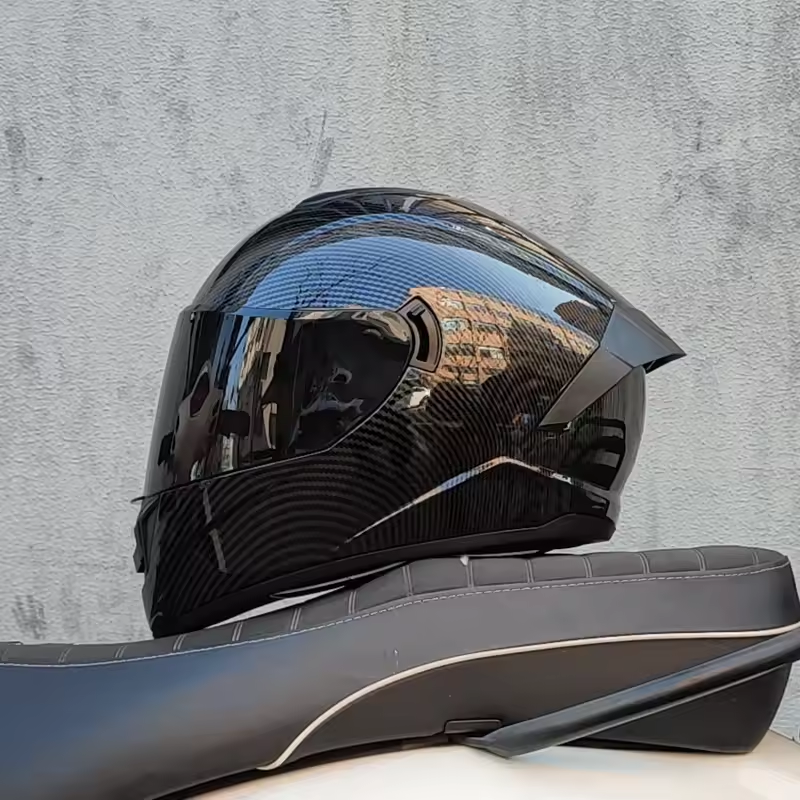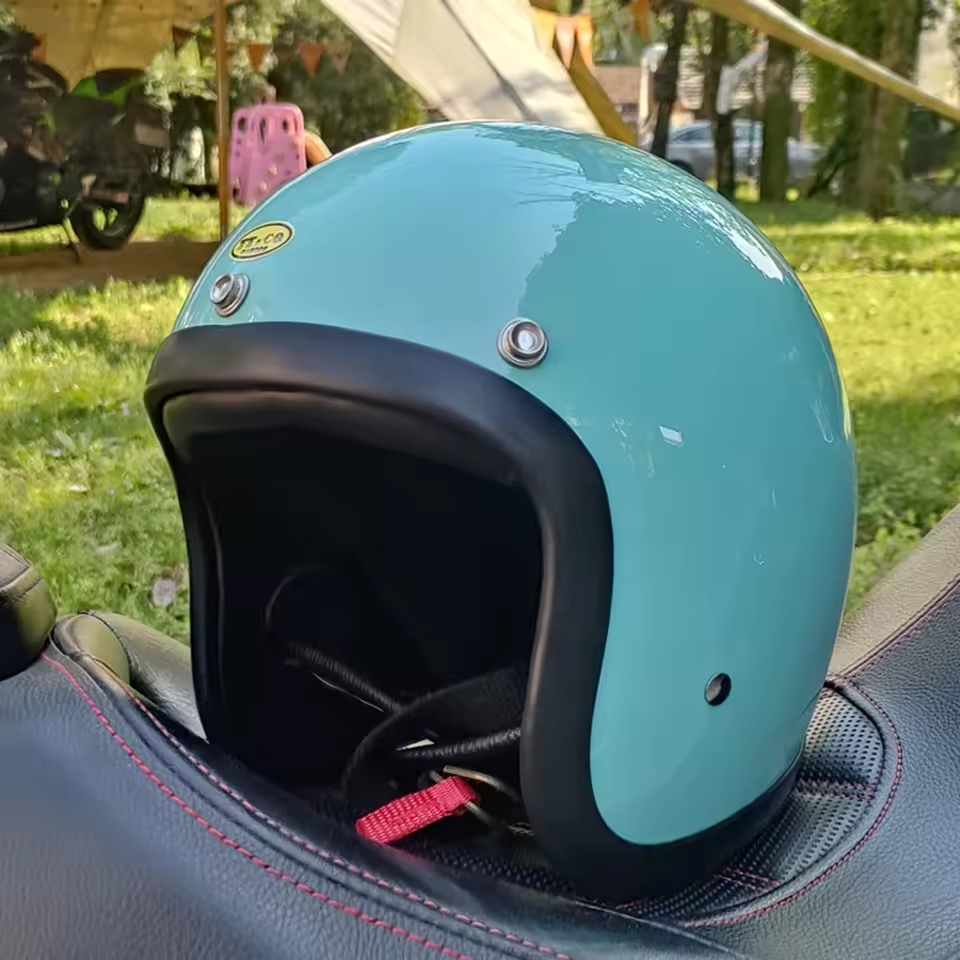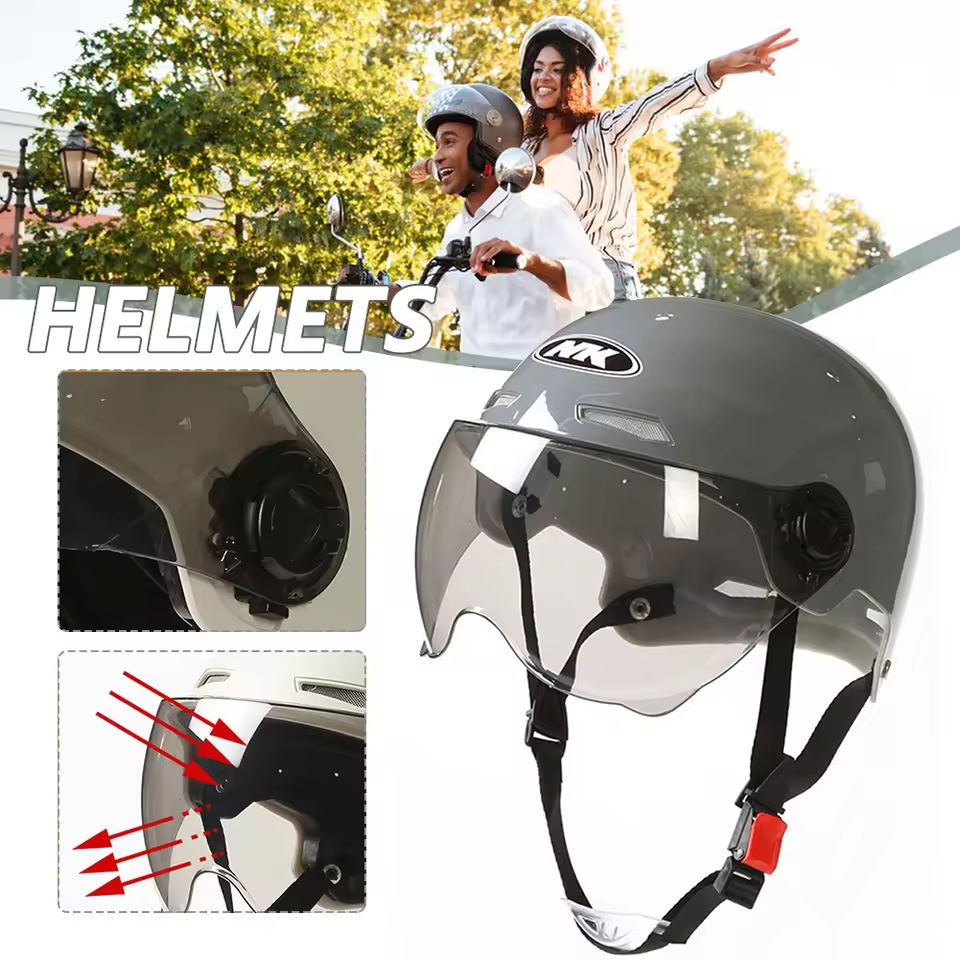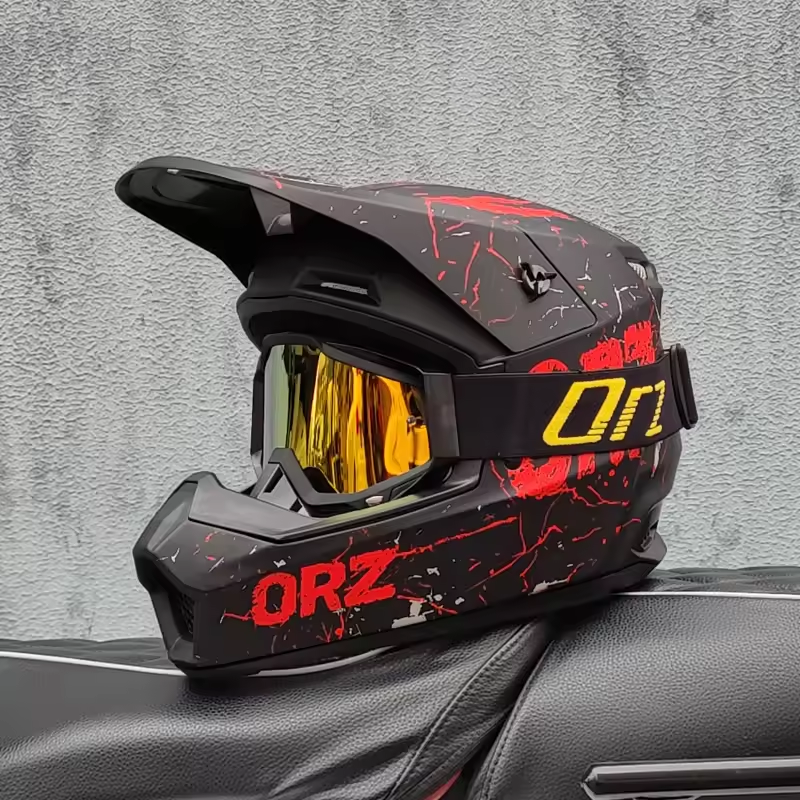Apr 16, 2025
How to Tighten a Motorcycle Helmet: Safety Tips for Secure Fit
Importance of Helmet Fit and Security
To ensure optimal safety while riding a motorcycle, proper helmet fit is critical—this includes knowing how to tighten a motorcycle helmet correctly. A loose helmet risks flying off during an accident, leaving your head vulnerable. Conversely, an overly tight helmet may cause discomfort and distraction. Mastering how to tighten a motorcycle helmet ensures secure protection, reducing head injury risks and distributing weight evenly to prevent neck strain. The correct adjustment of straps and chinstraps is fundamental to achieving both comfort and safety on the road.

Helmet fit and security influence how the helmet performs in wind and at high speeds. A secure helmet won’t shift or lift, which can affect your control and comfort. Proper fit and security also mean better noise reduction, less fatigue, and more focus on the road.
In short, a properly secured helmet is the cornerstone of safe motorcycle riding. It’s not just about compliance with laws. It’s about ensuring every ride is as safe as possible. So, learning [how to tighten a motorcycle helmet] is critical. It should be a significant part of your routine before each ride.
The Basics of Motorcycle Helmet Sizing
Choosing the right motorcycle helmet size is crucial. It begins with measuring your head. Use a fabric tape measure. Wrap it around your head, above your eyebrows and ears. Note the largest measurement in inches or centimeters. Consult the manufacturer’s size chart. Match your head measurement to the recommended helmet size.
Trying on helmets is next. Every brand may fit differently. A proper helmet should sit snugly on your head. It should not tilt back or wobble side to side. The cheek pads should touch your cheeks without pressing too hard. The brow pads should fit comfortably across your forehead. There should be no gaps between the temples and the brow pads.
Remember to check the helmet shape. Motorcycle helmets come in round oval, intermediate oval, and long oval. Choose a helmet shape that matches the shape of your head for the best fit. A mismatch in helmet shape can cause pressure points, making the helmet uncomfortable.
Finally, be patient when selecting a helmet size. Try on various brands and models. Wear each helmet for a few minutes. It can help you feel any pressure points. A good fit means more comfort and better security on the road. So, taking the time to get it right is important. Your safety is worth this initial effort.
Step-by-Step Guide to Tightening a Motorcycle Helmet
To ensure your helmet is tight and secure, follow this simple guide:
- Open the Chin Straps: First, unbuckle the chin straps. This will prepare you for adjustment.
- Place the Helmet on Your Head: Gently pull the helmet onto your head. Ensure it sits level and covers your forehead.
- Adjust the Pads: If your helmet has adjustable pads, position them for a snug fit. They should touch your cheeks and forehead evenly with no gaps.
- Fasten the Chin Strap: Buckle up the chin strap. It should sit under your chin and touch the skin. It should be tight enough to keep the helmet on but not uncomfortable.
- Check the Strap’s Length: There should only be enough room to fit one or two fingers between your chin and the strap. Adjust as needed.
- Secure the Throat Latch: If your helmet has one, make sure it’s secure. This prevents the helmet from lifting off at high speeds.
- Perform a Final Check: Give your head a few nods and shakes. Your skin should move with the helmet. If it moves separately, tighten the straps a bit more.
- Inspect for Pressure Points: Lastly, wear the helmet for a bit. Notice any discomfort or pressure points. Make adjustments to reduce these pains.
By following these steps, you can ensure a tight and safe fit for every ride. Remember, secure helmets save lives, so always double-check before taking off.
Tips for Ensuring a Snug and Comfortable Fit
Finding the perfect fit for your motorcycle helmet can be the difference between a risky ride and a safe journey. Here are some tips to ensure your helmet is both snug and comfortable, making your rides much safer and enjoyable.
- Test the Wiggle Room: After securing the helmet, lightly wiggle it with your hands. The helmet should move your skin without slipping on your head. If it slides, tighten the straps.
- Wear It for a While: Spend some time wearing the helmet before riding. This helps you notice any discomfort that may not be apparent at first.
- Check for Hotspots: Pressure points or ‘hotspots’ can cause headaches. As you wear the helmet, pay attention to areas that feel too tight and adjust accordingly.
- Adjust as You Go: Keep in mind that the fit may change slightly as you wear the helmet more. A break-in period is typical. Adjust when needed for a continued snug fit.
- Consider Your Hair: If you have long hair or change your hairstyle often, make sure to check the fit with each significant change. Hair can affect the helmet’s fit.
- Mind the Ear Space: Ensure there’s enough room for your ears. The helmet should not press too hard on your ears or fold them.
- Chin Strap Position: The chin strap should sit just below your chin, not on your neck or jaw. Make sure it’s snug but not choking.
By implementing these tips, you ensure not just a fit that’s secure, but also a fit that promises comfort over long rides. Always remember that comfort and security go hand in hand when it comes to safe motorcycle riding.
How to Tighten a Motorcycle Helmet: Step-by-Step Guide to Secure Straps and Buckles
Mastering how to tighten a motorcycle helmet is essential for optimal safety. Proper strap adjustment ensures the helmet stays securely in place during rides, preventing it from loosening or shifting during accidents. Follow these precise steps to achieve the perfect fit:
- Start with Loosened Straps:
- Unfasten all buckles and sliders to begin with maximum flexibility.
- This allows full adjustment range for a personalized fit.
- Adjust the Slider Buckles:
- Locate the adjustment sliders on the side and rear straps.
- Slide them outward to lengthen straps, ensuring you can tighten them snugly afterward.
- Secure the Chin Strap First:
- Fasten the chin strap so it rests snugly under your jaw.
- The buckle should click firmly, and only two fingers should fit between the strap and your skin.
- Position the Side Straps Correctly:
- The side straps must form a V-shape under your ears.
- Use sliders to adjust their length, ensuring the “V” points directly to your earlobes for proper alignment.
- Test for Movement and Comfort:
- Shake your head gently—the helmet should not slide or rotate freely.
- If it moves, tighten the side straps slightly until secure but still comfortable.
- Final Check Before Riding:
- Ensure the chin strap end tucks neatly into the buckle to avoid flapping.
- Re-adjust straps if needed, and repeat this process before every ride.
Testing Helmet Stability For Safe Riding
Ensuring your motorcycle helmet remains stable during a ride is crucial for safety. A stable helmet protects your head effectively. To test your helmet’s stability, here are some methods you can use:
- Perform a Roll-Off Test: Gently try to roll the helmet off your head. The helmet should stay in place without rolling off. If it rolls off, it’s too loose.
- Nod and Shake Your Head: Nod up and down, and shake your head side to side. Your helmet should move with your skin, indicating a proper fit.
- Check During Riding: Notice how your helmet feels while riding. It should stay snug against your head even at high speeds or in strong wind.
- Try Different Angles: Look up, down, and side to side. Make sure the helmet doesn’t shift uncomfortably or block your vision.
By conducting these stability tests, you reinforce the importance of [how to tighten a motorcycle helmet]. Always test your helmet before you set out to ensure maximum safety on your journey.
Helmet Care and Maintenance for Optimal Performance
To keep your motorcycle helmet in top shape, regular care and maintenance are key. These are a few guidelines to help you look after your helmet:
- Clean Regularly: Wipe down the exterior with a mild soap and water solution. For the interior, use products designed for helmet lining to avoid damage.
- Inspect After Rides: Look for scratches or dents that could compromise the helmet’s integrity. Pay special attention after any impact.
- Store Properly: Keep your helmet in a cool, dry place away from direct sunlight. Use a helmet bag for extra protection against dust and scratches.
- Avoid Customizations: Stickers or paint could harm the helmet’s structure. Stick to manufacturer-approved accessories only.
- Handle with Care: When not wearing it, don’t hang your helmet on the motorcycle’s mirrors. It could fall and get damaged.
Remember, a well-maintained helmet will provide better protection and last longer. Check the manufacturer’s guidelines for specific maintenance advice. Keep these practices up, and you’ll maximize your helmet’s performance and lifespan.
Recognizing When to Replace Your Motorcycle Helmet
Knowing when to get a new motorcycle helmet is as essential as securing it properly. With time and use, a helmet’s protective features can degrade. Here’s what to watch for:
- Check the Expiration Date: Helmets have a lifespan. Most manufacturers recommend replacing them every five years.
- Look for Wear and Tear: Inspect your helmet for cracks, frays in the strap, or a loose fit. These signs mean it’s time for a replacement.
- After a Crash: Always replace your helmet after an impact, even if it looks fine. Impacts can weaken the helmet’s structure.
- Consider the Fit: If your helmet no longer fits well due to padding compression or other changes, replace it.
- Observe Material Breakdown: The helmet’s materials can break down over time, especially with exposure to sunlight and chemicals.
- Updated Safety Standards: If safety standards have changed and your helmet is outdated, it’s time for a new one.
Always choose safety over saving money when it comes to motorcycle helmets. Regular checks and timely replacements can save your life.
More Details


